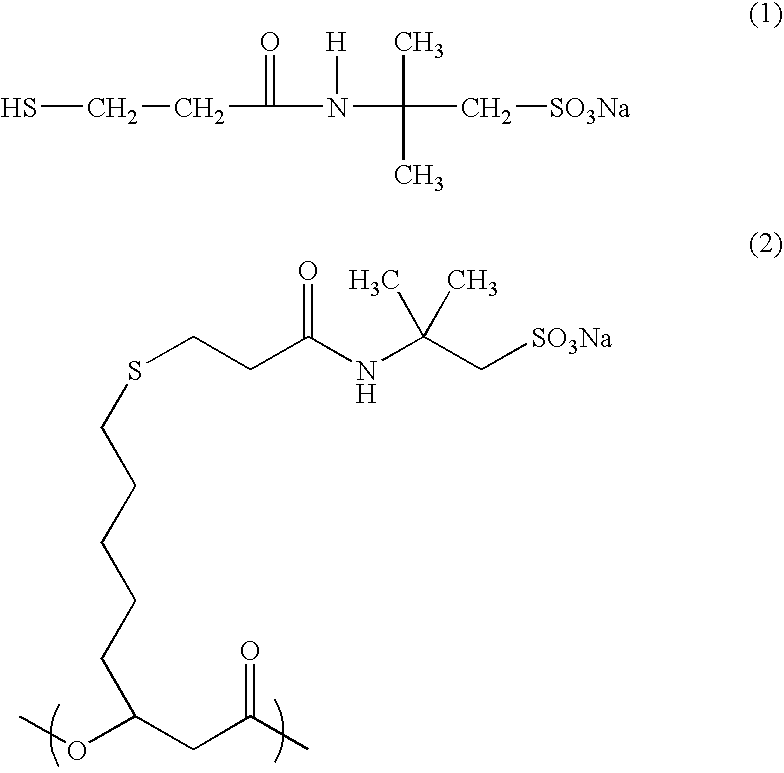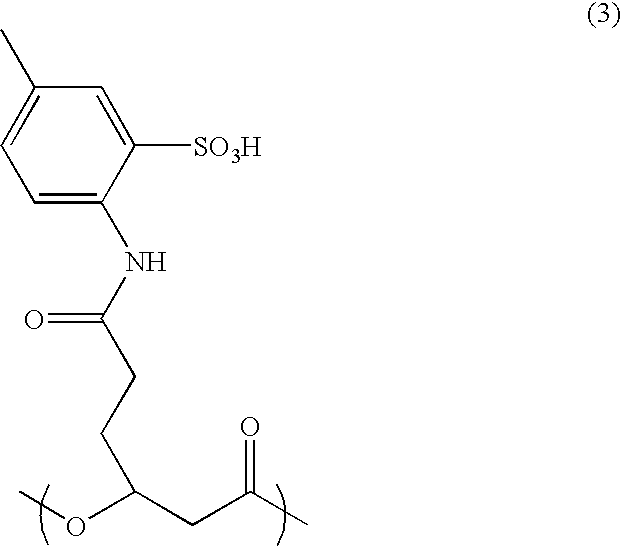Process for formation of pattern of polyhydroxyalkanoate
- Summary
- Abstract
- Description
- Claims
- Application Information
AI Technical Summary
Benefits of technology
Problems solved by technology
Method used
Image
Examples
reference example 1
Production of PHA-Synthesizing Enzyme: 1
[0140] A PHA-synthesizing enzyme gene (YN2—C1) was derived from a YN2 strain by a conventional manner. The gene was inserted to the corresponding site of pGEX-6P-1 (Amasham Pharmacia Biotech Co., a plasmid for expression of a fusion protein with GST). With this vector, Escherichia coli (JM109) was transformed to obtain a transformed strain for expression. The transformed strain was derived according to the method disclosed in Japanese Patent Application Laid-Open No. 2003-011312. The procedure is described in detail in that patent application.
[0141] The transformed strain was pre-cultivated overnight in 10 mL of an LB-Amp culture medium. A 0.1 mL portion of the pre-culture medium was transferred to 10 mL of another LB-Amp culture medium and was cultivated at 37° C. by shaking at 170 rpm for 3 hours. Then IPTG was added thereto (final concentration: 1 mmol / L) and the cultivation was continued for 4 to 12 hours.
[0142] The bacterial strain wa...
reference example 2
Production of PHA-Synthesizing Enzyme: 2
[0144] A P91 strain, an H45 strain, a YN2 strain, or a P161 strain was inoculated into 200 mL of an M9 culture medium containing 0.5% of yeast extract (Difco Co.) and 0.1% of octanoic acid, and was cultivated at 30° C. by shaking at 125 strokes / min. After 24 hour of the cultivation, the bacterial mass was recovered by centrifugation (98 km / s2 (=10,000×g), 4° C., 10 minutes). The recovered mass was suspended again in 200 mL of 0.1 mol / L tris-HCl buffer (pH 8.0) and centrifuged again for washing. The bacterial mass was suspended again in 2.0 mL of 0.1 mol / L tris-HCl buffer (ph 8.0), and crushed by ultrasonic crusher. The crushed mixture was centrifuged (118 km / s2 (=12,000×g), 4° C., 10 minutes), and the supernatant liquid was recovered to obtain a crude enzyme.
[0145] Further to the obtained crude enzyme, Raiho gel was added and concentrated by ultrafiltration to obtain a crude enzyme solution of 10 U / mL.
reference example 3
Production of PHB-Synthesizing Enzyme
[0146] A KK01 strain, a TB64 strain, or a TL2 strain was cultivated at 30° C. for 24 hours in 10 liters of an M9 culture medium (composition shown below) containing 0.5% of a yeast extract, 0.3% of a mineral solution (composition shown below). The recovered liquid culture medium was centrifuged (78 km / s2 (=8,000×g), 4° C., 10 minutes). The supernatant liquid was removed, and the bacterial mass pellet was suspended again in 500 mL of a PBS solution at 4° C. This bacterial suspension were introduced in 40 mL portions successively into vessels kept cooled at 4° C., and the bacterial cells were crushed by pressurization at 216 MPa (=2,200 kg / cm2) with a French press and gradual releasing through a nozzle. The resulting crushed cell liquid suspension was centrifuged at 4° C. at 78 kg / s2 (=8,000×g) for 10 minutes to recover the supernatant liquid. This supernatant liquid was filtered through a filter of 0.45 μm to eliminate a solid contaminant to obt...
PUM
| Property | Measurement | Unit |
|---|---|---|
| Temperature | aaaaa | aaaaa |
| Glass transition temperature | aaaaa | aaaaa |
Abstract
Description
Claims
Application Information
 Login to View More
Login to View More - R&D
- Intellectual Property
- Life Sciences
- Materials
- Tech Scout
- Unparalleled Data Quality
- Higher Quality Content
- 60% Fewer Hallucinations
Browse by: Latest US Patents, China's latest patents, Technical Efficacy Thesaurus, Application Domain, Technology Topic, Popular Technical Reports.
© 2025 PatSnap. All rights reserved.Legal|Privacy policy|Modern Slavery Act Transparency Statement|Sitemap|About US| Contact US: help@patsnap.com


